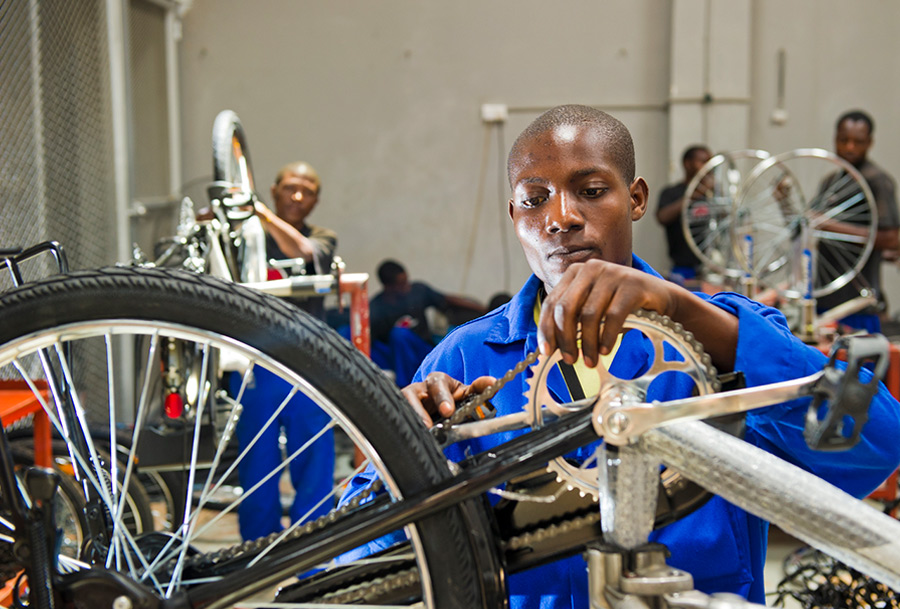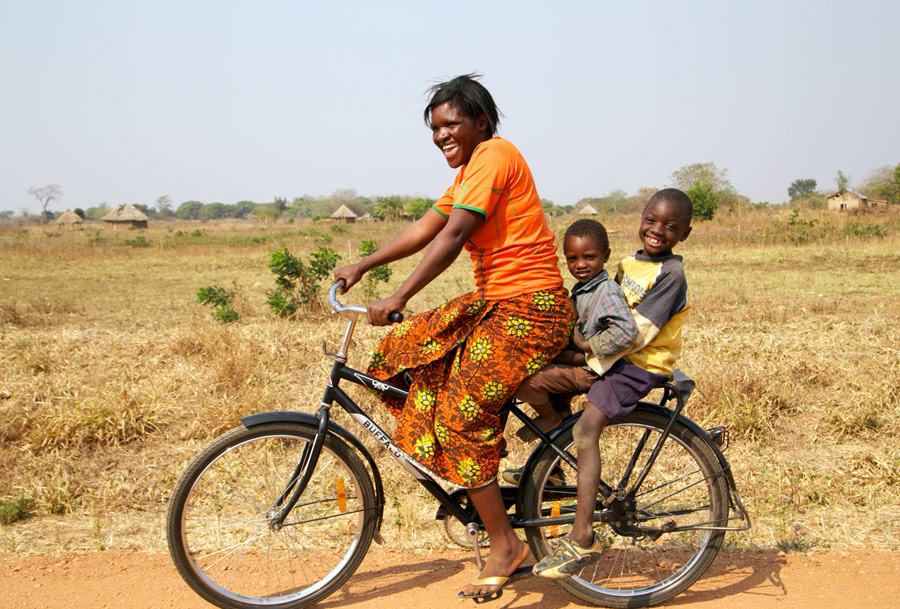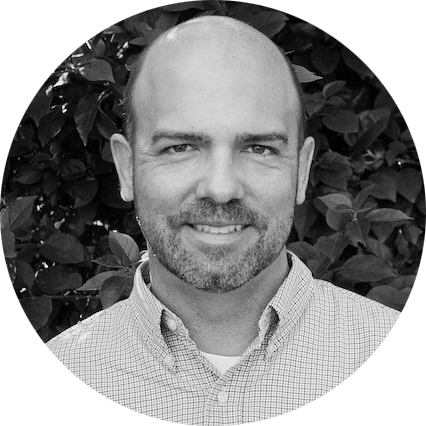n 2006, after 15 years as an investment banker, I needed a change. I was in search of the ever-elusive life with “meaning and purpose.”
A year later, I found myself in Lusaka, Zambia, the first employee on the ground for the young nonprofit World Bicycle Relief. I would help distribute bicycles to healthcare workers who had no form of transportation other than walking.
I had no bicycle experience and no nonprofit experience. I had never lived outside the United States, let alone in Africa. How did I get here?
It was there, on holiday in 2006, that I befriended F.K. Day and Leah Missbach Day, the husband-and-wife team behind the newly born nonprofit World Bicycle Relief (WBR). They were exploring Africa, looking to bring their bicycle distribution program to the continent.
During a 2004 visit to Sri Lanka after the Indian Ocean tsunami, F.K. and Leah realized the potential impact of providing people with bicycles to help rebuild their lives. They quickly worked to fund 24,000 bicycles for displaced survivors. From the key findings of that disaster relief program, WBR was born.
While in Kenya, F.K.’s unique lens as a founder of SRAM Corp., a bicycle component manufacturer, drew my attention to the issue of mobility in rural communities. I soon saw what they saw: the bicycle as a tool that helped people help themselves.
Walking is the primary mode of transportation for more than 500 million people in rural Africa. The lack of transportation makes everyday tasks a struggle. Long distances to school, markets, health clinics and work create exhausting challenges that limit access to economic and educational mobility.
F.K. and Leah knew bicycles could be a successful, sustainable solution in sub-Saharan Africa. But they needed someone on the ground to pull it off.
If F.K. had simply been a cycling enthusiast, I probably wouldn’t have been interested. But years of doing my due diligence and gut checks told me he was a visionary. With more than 20 years of product development experience, F.K. had the skills, capacity and connections to make it work. Could I be the one to help him realize his vision while also making a change in my own life?
With my investment banker hat still firmly in place, I gave F.K. a year. I would take a sabbatical to put my skills to use and get the operations off the ground in Lusaka, Zambia.
I worked through the logistics: distribution and training field mechanics, as well as drafting bike contracts for healthcare workers. Getting stuff done was what I knew. You push through barriers. You have a vision and have to execute. The elements were new, but this was familiar: conducting the orchestra.
And F.K. knows bikes. He found that the various brands of “bicycle-shaped objects” available in Zambia didn’t serve the needs of the communities in which they were sold. Quality spare parts were hard to come by, and the design of the bikes couldn’t provide the stability needed to support big loads and passengers over long distances in remote areas. He said he couldn’t in good conscience provide these bicycles for the RAPIDS program.
Eventually, we built an entirely new bicycle that would better serve the communities of Africa — the Buffalo Bicycle, named after the tough African animal that survives the harshest conditions on the continent.
From 2007 to 2009, we provided more than 23,000 bicycles through the RAPIDS program to support healthcare volunteers. With access to good-quality transportation, the volunteers could now reach more patients more quickly.
The success of the Buffalo Bicycle and the program ultimately led to my next challenge: high demand.
Drawing from my years in finance and F.K.’s entrepreneurial background, we looked outside the usual models for a solution, eventually creating Buffalo Bicycles, Ltd. This social enterprise subsidiary, owned 100 percent by the not-for-profit WBR, would sell directly to those seeking reliable transportation.


This model rarely appeared in the industry yet provided the ideal solution to our problem. It also proved valuable to me personally. I took my finance and economics background and was able to apply it in a way that had a huge impact in the marketplace by helping to supply a life-changing product.
WBR also employs local assembly teams, trains local field mechanics and uses local distribution facilities. Buffalo Bicycle shops create access to affordable spare parts that keep our bikes moving. This creates jobs in the same economies and communities where we provide bicycles to those who need them most.
One of the first people I ever met in Africa was Brian Berkhout, a tenant farmer in Zambia whose family’s farm was the first to be seized in Zimbabwe. He bought a Buffalo Bicycle after it became available through the social enterprise model. He loved the bike so much that he came back to me and said he’d love to work for the organization if we ever expanded to Zimbabwe.
Today, Brian is running the show on the ground as Vice President for Africa. And I’m back stateside, still conducting the orchestra 12 years later, now as CEO of WBR.
We’ve made great strides since those early days in Sri Lanka and Zambia. WBR operates in 13 countries, has trained more than 1,900 field mechanics and has assembly facilities in Kenya, Zimbabwe, Zambia and Malawi.
I couldn’t have imagined this even in my wildest dreams when I took that one-year sabbatical so many years ago. I found a life of meaning and purpose, but I never did remove my investment banker cap. If my time with World Bicycle Relief has taught me anything, it’s that our work is not yet finished.

Dave Neiswander became CEO of World Bicycle Relief in 2018 after serving for nine years as WBR’s first Director for Africa, for which he was based in Zambia for six years and South Africa for three years. Before coming to WBR, Neiswander spent 15 years in investment banking. He holds a degree in business from Miami University in Ohio.
Dave Neiswander became CEO of World Bicycle Relief in 2018 after serving for nine years as WBR’s first Director for Africa, for which he was based in Zambia for six years and South Africa for three years. Before coming to WBR, Neiswander spent 15 years in investment banking. He holds a degree in business from Miami University in Ohio.